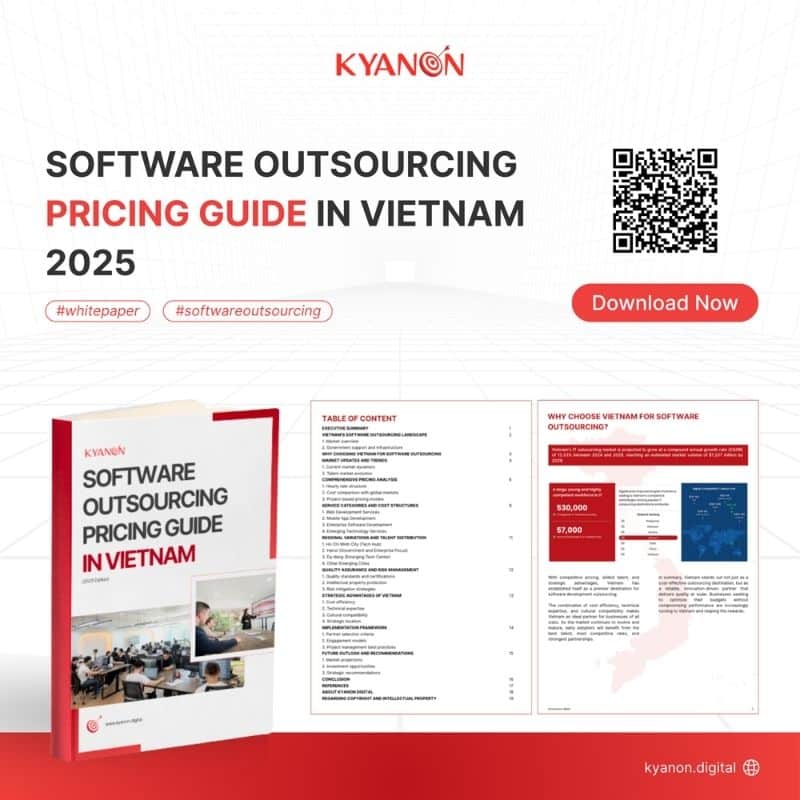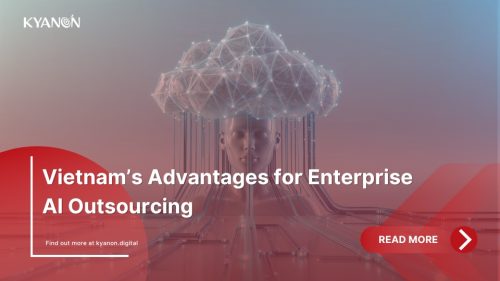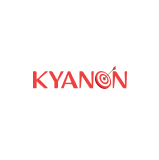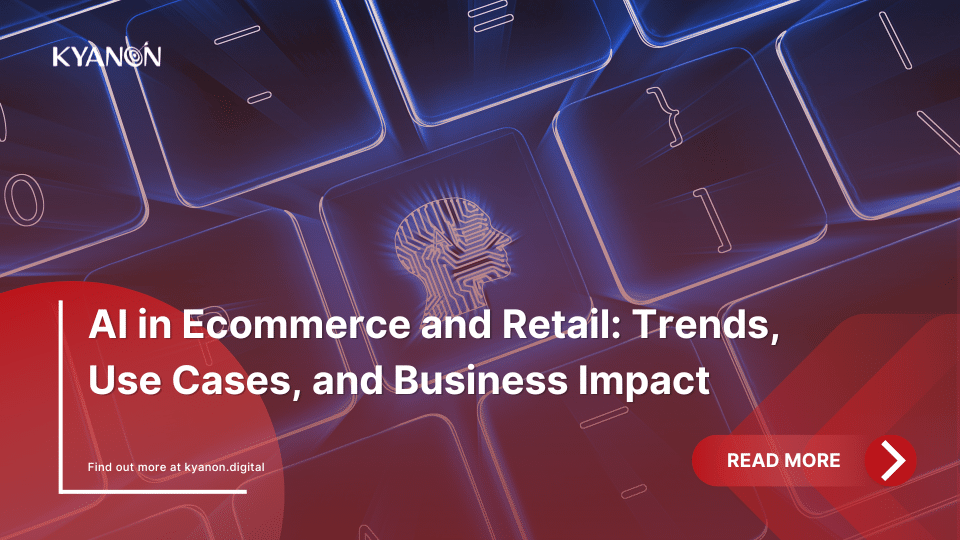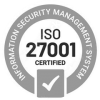Companies worldwide recognize the urgency to modernize their technologies to stay competitive. As customer expectations rise, businesses must embrace composable architecture to create flexible, scalable digital solutions.
Traditionally, organizations relied on rigid, monolithic systems, limiting their ability to adapt. However, today’s digital landscape demands a shift toward modular software architecture, integrating composable applications to enhance agility and innovation. This transformation has given rise to new concepts like composable commerce, offering businesses the ability to customize and scale their digital ecosystems. But what do these terms really mean?
This glossary will help you understand composable architecture and explore the benefits of composable architecture in modern digital transformation. Let’s dive into why this approach is becoming a game-changer.
Further reading:
- What is headless commerce? All Things You Need To Know
- Headless Commerce And Microservices Explained
- Headless Ecommerce & Its Top 10 Common Mistakes
Why is Composable Architecture Trending?
The global composable applications market size reached USD 5.5 billion in 2023 and is expected to hit around USD 27.71 billion by 2033, growing at a CAGR of 17.60% from 2024 to 2033. (Precedence Research)
Asia Pacific is expected to exhibit the highest CAGR of 19.5% during the forecast period in the composable applications market. Known for its rapid adoption of new technologies, Asia Pacific has consistently been an attractive region for market growth. It encompasses major economies like Japan, China, Australia, New Zealand, India, and Singapore.
The drive to enhance organizational operational efficiency and reduce costs is expected to fuel the overall expansion of the composable applications market in Asia Pacific.

Composable applications market size 2023 – 2030 (Source: Precedence Research)
Factors driving the market growth of composable applications include the increasing demand for rapid customization and scalability in software development. As businesses strive to adapt to evolving market dynamics and customer preferences, the ability to quickly customize and scale applications according to specific requirements becomes essential.
Composable applications enable organizations to achieve this agility by leveraging modular components that can be easily assembled, modified, and scaled as needed.
Enterprises are rapidly adopting composable architecture for several key reasons:
- Flexibility: Businesses can choose the best tools for their specific needs and easily replace technologies that no longer align with their goals.
- Cost–Effectiveness: By leveraging composable applications and headless solutions, companies avoid the high costs of traditional, bulky software.
- Agility: The ability to quickly adapt to market changes and evolving business needs is one of the biggest benefits of composable architecture.

Key reasons why enterprises adopt composable architecture
The need for composable applications has also grown because of more digital transformation projects and the use of cloud-native architectures. These applications offer greater flexibility and resilience compared to traditional monolithic software architectures, allowing businesses to innovate more rapidly and respond to market changes effectively.
This glossary will guide you through the most important terms in composable architecture, from A to Z.
Glossary
A
API
An API is a set of rules that allows different software applications to communicate with each other. APIs enable apps to access each other’s data and services without needing to understand the internal workings of the other systems. For example, an API could allow an eCommerce website to pull inventory data from a separate backend system or integrate with payment gateways for checkout processing.
B
Best of Breed
Best of breed is a software selection strategy where businesses choose the best solution for each specific use case rather than relying on a single vendor for everything. For instance, a company might choose the best CMS (Content Management System), DAM (Digital Asset Management), and analytics tools from different suppliers to create a highly tailored solution that meets all their needs.
C
CMS
A CMS is a platform used to create, manage, and modify digital content. Traditional CMS platforms provide both the back-end management of content and front-end presentation, while headless CMS systems decouple the back-end from the front-end, offering more flexibility by delivering content through APIs to any device or platform.
Composable Business
A composable business is an approach that combines best-of-breed tools and services to create a custom tech stack that is integrated and tailored to a company’s specific needs. In eCommerce, this approach allows businesses to select different components, such as product search or payment processing, from various providers and integrate them seamlessly.
Composability/Composable Architecture
Composable architecture is a design principle that focuses on building systems using independent, modular components that can be easily mixed and matched to meet specific business requirements. This approach offers flexibility, scalability, and agility, allowing businesses to adapt and innovate quickly.
Composable Commerce
Composable Commerce refers to creating eCommerce solutions by integrating the best available components from different providers, such as product catalogs, payment systems, and marketing tools. This allows businesses to tailor their eCommerce platforms to their unique needs while maintaining scalability and flexibility.
Composable DXP
A Composable DXP is a platform designed to manage and optimize digital experiences across multiple touchpoints, combining top-tier solutions that work seamlessly together. Using APIs, these solutions can be integrated, ensuring flexibility and scalability as digital touchpoints grow.
Cloud-native
Cloud-native refers to software designed and built to be deployed, scaled, and operated in cloud environments. Cloud-native software typically offers benefits such as high scalability, availability, and flexibility, allowing businesses to optimize their resources and meet demand on the fly.
D
DXP
A DXP is a collection of integrated technologies that help create, manage, and deliver personalized digital experiences across various channels. DXPs typically include features like content management, customer data integration, and analytics to enhance user engagement.
Dynamic Website
A dynamic website is a site that uses client-side JavaScript and APIs to dynamically update content in real time, offering a more personalized and interactive experience for users. These sites can change based on user behavior, preferences, and interactions.
Decoupling
In composable architecture, decoupling refers to separating the front-end and back-end components of a system. This allows greater flexibility and agility, as changes to one part of the system do not impact the other. For example, the front-end of an eCommerce site can be updated or swapped without affecting back-end systems like inventory management.
E
Event-Driven Architecture
Event-Driven Architecture (EDA) is a software design pattern where events (changes in state) trigger real-time actions across a system. Unlike traditional request-response models, EDA enables asynchronous, decoupled communication, allowing different components to react dynamically without direct dependencies.
In a composable system, flexibility and scalability are essential. EDA supports this by enabling loosely coupled services that communicate through event streams, ensuring faster data processing, real-time automation, and system resilience.
A smart manufacturing system using EDA can automatically trigger maintenance when IoT sensors detect machinery issues, preventing downtime without human intervention.
F
Flexibility & Scalability
In today’s fast-changing business environment, organizations must adapt quickly to market shifts, customer demands, and technological advancements. Composable architecture provides the agility needed to scale efficiently and integrate new technologies without overhauling entire systems.
G
GraphQL
GraphQL is a query language and runtime for APIs that allows clients to request exactly the data they need—no more, no less. Unlike REST APIs, which rely on multiple endpoints for different data, GraphQL enables a single flexible API that dynamically fetches data from various services.
In a composable architecture, applications are built using independent, modular services that must communicate efficiently. GraphQL plays a crucial role by:
- Providing a Unified Data Layer – Aggregates data from multiple microservices into a single, structured response.
- Reducing Over-fetching & Under-fetching – Clients can request only the necessary data, improving performance.
- Enhancing API Flexibility – Supports evolving applications by allowing teams to extend schemas without breaking existing clients.
- Accelerating Frontend Development – Developers can retrieve complex, nested data structures in a single request, speeding up UI development.
- Simplifying Third-Party Integrations – Seamlessly connects with external APIs, databases, and legacy systems without rigid endpoint structures.
H
Headless CMS
A headless CMS is a content management system that separates the back-end (content repository) from the front-end (presentation layer). By using APIs, it allows content to be delivered seamlessly to any device or platform, providing more flexibility in how and where content is presented.
Headless Commerce
Headless commerce decouples the back-end (e.g., inventory management, order processing) from the front-end (customer-facing interface). This enables businesses to create custom, flexible eCommerce experiences and easily integrate new tools or platforms as needed.
Hybrid Cloud & Multi-Cloud
Composable architecture thrives in cloud-based ecosystems by leveraging modular, API-driven, and scalable components. Hybrid and multi-cloud strategies enhance this approach by providing flexibility, resilience, and cost optimization. Businesses can distribute workloads across multiple cloud environments, ensuring seamless integration and optimal performance.
I
IoT & Composable Applications
The Internet of Things (IoT) and composable architecture share a common goal: building flexible, scalable, and modular ecosystems. As IoT devices generate vast amounts of real-time data, composable applications ensure seamless integration, interoperability, and dynamic responsiveness across digital environments.
IoT ecosystems consist of smart devices, sensors, and cloud-based applications that need to communicate efficiently. A composable approach allows businesses to:
- Modularize IoT services—Enable plug-and-play functionality for IoT components.
- Optimize data flow – Ensure real-time data processing and automation.
- Enhance scalability—adapt to increasing device numbers without disrupting infrastructure.
- Improve interoperability—Connect IoT systems with diverse applications and platforms via APIs.
J
Jamstack
Jamstack is a modern web development architecture that uses JavaScript, APIs, and markup. It focuses on pre-rendering content at build time for fast performance, while dynamic functionality is handled through JavaScript and APIs. This approach is often used for high-performance sites and applications.
K
Kubernetes & Containerization
Composable architecture thrives on modularity, scalability, and flexibility—all of which are seamlessly enabled by Kubernetes. As a powerful container orchestration platform, Kubernetes helps businesses deploy, manage, and scale composable applications efficiently.
Containerization is the backbone of scalable, independent, and lightweight application development. Containers package code, dependencies, and runtime environments into portable units that can run anywhere.
L
Low-Code and No-Code Platforms
Low-Code and No-Code platforms allow businesses to build and customize composable applications without requiring extensive coding expertise. These platforms provide drag-and-drop interfaces and pre-built templates that enable faster innovation and easier collaboration between technical and non-technical teams.
M
MACH
MACH stands for Microservices, API-first, Cloud-native, and Headless. It’s an architectural approach that supports composable design, making it easier for businesses to integrate and swap out components as their needs evolve. MACH provides the flexibility and scalability required to adapt quickly to changing market conditions.
MACH Alliance
The MACH Alliance is a collective of companies that advocate for an open, best-of-breed technological environment based on the MACH principles. The alliance promotes the use of microservices, APIs, cloud-native solutions, and headless technologies for building scalable, adaptable digital solutions.
Microservices
Microservices are small, independent applications designed to perform a specific business function. These services can be developed, deployed, and scaled independently, making them highly flexible and adaptable to changing business requirements.
Modular
Modular design refers to breaking down a system into smaller, independent modules that can be easily swapped or updated without affecting the overall system. This enables businesses to modify and scale their systems as needed, improving flexibility and reducing redundancy.
Monolithic Architecture
Monolithic architecture is a traditional software design where various business functions are tightly integrated into a single application. While monolithic systems are simpler to develop initially, they can be less flexible and harder to scale or modify compared to composable, modular solutions.
O
Omnichannel Strategy
An omnichannel strategy delivers a seamless, consistent digital experience across multiple customer touchpoints (web, mobile, social, etc.) through composable applications. This strategy ensures that customers can interact with a brand anytime, anywhere, with a unified experience.
P
Personalization
Personalization in composable commerce refers to tailoring the user experience based on customer behavior, preferences, and data. By using composable applications, businesses can customize content, product recommendations, and interactions to deliver highly relevant and engaging experiences.
R
Reusability of Components
A significant advantage of composable architecture is the reusability of components. By designing systems with interchangeable and reusable modules, businesses can reduce redundancy, improve efficiency, and maintain flexibility as they scale.
S
Single Page Application (SPA)
A Single Page Application (SPA) is a type of web application that loads a single HTML page and dynamically updates content without refreshing the page. This provides a more fluid, interactive experience for users by only loading the necessary content as they interact with the app.
Suite DXP
A Suite DXP is a comprehensive digital experience platform that includes a CMS, digital asset management (DAM), analytics, and personalization tools. This integrated suite allows businesses to manage and optimize their entire digital presence from a single platform.
T
Third-Party Integrations
One of the key benefits of composable architecture is the ability to easily integrate third-party tools and services. By using APIs and modular components, businesses can enhance their systems with external technologies, such as payment processors, CRM systems, or marketing automation tools, without disrupting the overall ecosystem.
W
Webhooks & Real-Time Data Sync
In composable architecture, where modular applications and microservices communicate dynamically, real-time data flow is essential. Webhooks play a key role in enabling event-driven integrations, allowing applications to react instantly to data changes, user actions, or system updates.
Composable applications require up-to-the-second data accuracy to ensure smooth functionality across multiple integrated systems. Real-time data synchronization allows services to stay updated without delays or inconsistencies
X
XaaS (Everything as a Service)
XaaS extends the concept of SaaS (Software as a Service) to include Everything as a Service, offering a broad range of services that optimize composable architecture. With XaaS, businesses can access everything from infrastructure to specific software components as services, streamlining their operations and reducing the need for in-house management.
Transform your ideas into reality with our services. Get started today!
Our team will contact you within 24 hours.
Future-Proof Your Business with Composable Architecture
Adopting composable architecture is the key to creating scalable, flexible, and high-performance digital ecosystems. By leveraging modular software architecture, composable commerce, and composable applications, businesses can stay ahead in today’s fast-changing digital landscape.
At Kyanon Digital, a leading tech company in Vietnam, we specialize in developing digital commerce applications and web solutions tailored to your business needs. Whether you’re looking to modernize your eCommerce platform with composable commerce or build a fully API-driven ecosystem, our experts are here to help.
Ready to transform your digital strategy? Contact Kyanon Digital today for a free consultation and discover the benefits of composable architecture for your business.
Key Takeaways
- Composable architecture offers flexibility and scalability—by adopting a modular approach, businesses can build tech stacks that evolve with changing needs, offering better adaptability and faster innovation.
- Composable commerce is revolutionizing digital ecosystems. With composable commerce, businesses can customize and scale their digital platforms with ease, providing personalized and efficient customer experiences.
- Modernizing with composable architecture is essential for staying competitive—shifting from rigid, monolithic systems to modular solutions allows organizations to stay agile, meet growing customer demands, and remain at the forefront of digital transformation.

Get a custom Quote for Your Software Project
FAQs
Composable architecture should ideally be able to be used by developers for both front-end and back-end web development. Instead of building a monolithic architecture for the entire system, you might, for example, think about segmenting an e-commerce website into smaller parts, each of which is designed to carry out a certain function.
Modularity refers to the process of designing subsystems (modules) with clear, defined interfaces that can be utilized in various contexts. Composability, on the other hand, is the ability to seamlessly combine these modules to create a cohesive system.
Although people often use composable commerce and MACH architecture interchangeably, they are not synonymous. The main difference is that composable commerce uses different services like search, product discovery, and checkout that work together to improve user experiences. In contrast, MACH architecture emphasizes using cloud-based systems, headless design, microservices, and APIs.
Composable architecture focuses on piecing together interchangeable components to build tailored eCommerce solutions. Meanwhile, the headless approach emphasizes separating the frontend presentation layer from the backend, offering greater flexibility and customization.
The headless aspect of MACH allows eCommerce stores to be set up across various channels, meeting customers where they are instead of requiring them to come to you. This omnichannel approach has become a key expectation for today’s eCommerce shoppers.
References
- Composable Applications Market Size, Share, and Trends 2024 to 2034, Predencene Research
- Composable Must-Know Terms and Trends, ContentBloom
- Composable architecture use cases, Aalpha Information Systems India
- MACH Architecture: Monolith vs. MACH + Features, BigCommerce


